Fanwort Mapping
You can help us control fanwort in Foster's Pond. If you see it, report it. Here's how.
How to Report
Use the map above to indicate where you've spotted some fanwort - whether it's a single plant or a larger infestation. Click on the map to open a pdf version to print. Mark the location by hand on the printed version, then scan it for emailing. Alternatively, open the image in a photo-editing application and insert the location digitally. Email your annotated map to fanwort@fosterspond.org.
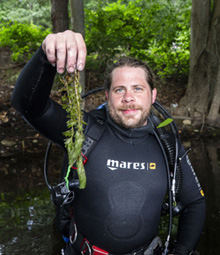 |
| Diver David Armas with fanwort. Photo by Winslow Townson. |
We'll forward your map to our professional diver. Be sure to add information about what he should be looking for - a plant, several plants, or a larger infestation - and where the location is in relation to some point on the shoreline (like "ten feet from shore mid-way between the two large pines").
Don't try to remove fanwort yourself. It's very fragile, and it spreads by fragementation. If a small piece gets away from you, all you will have done is plant a new colony somewhere else. And if you leave any roots behind, its location will be temporarily concealed, but it will grow back next year.
What to Look For
Here are some photos of fanwort in Dug Pond and Foster's Pond. If you're still not sure what you are looking for, go the mouth of the Mill Reservoir, off Bessie's Point (the area in yellow on the above map). That's where we're treating a large infestation of fanwort chemically. The whitened tips of the treated plants indicate that the slow-acting herbicide is beginning to take effect. Healthy plants are bright green. [First four photos below by David Armas.]
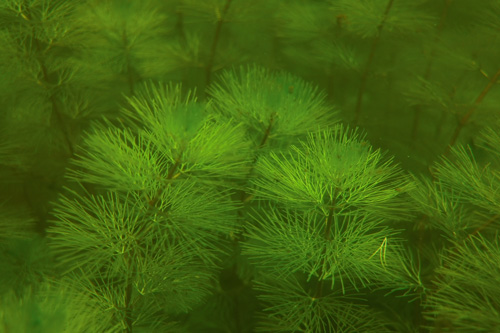
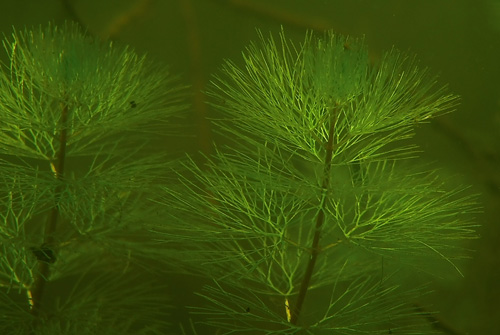
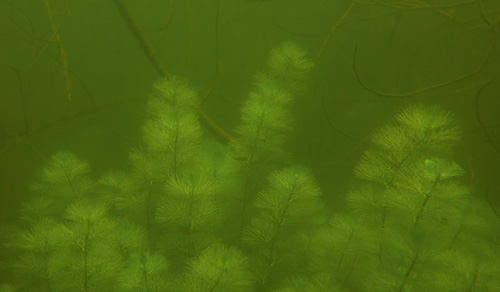
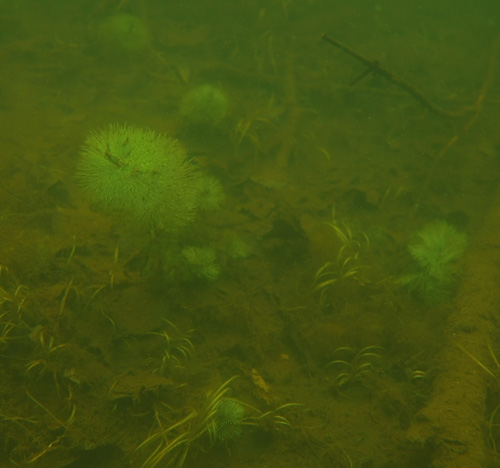
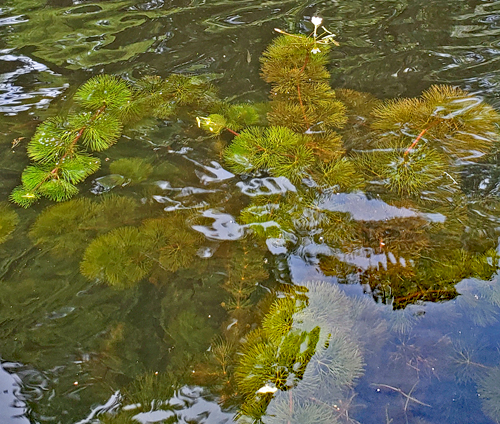

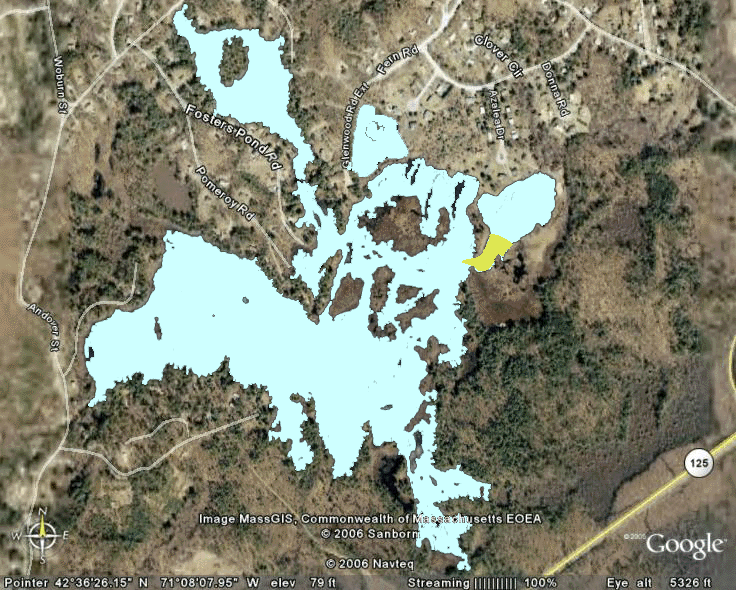

 Questions? Comments? Contact us at
Questions? Comments? Contact us at